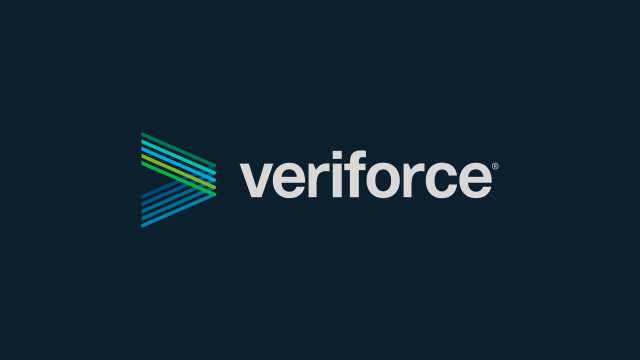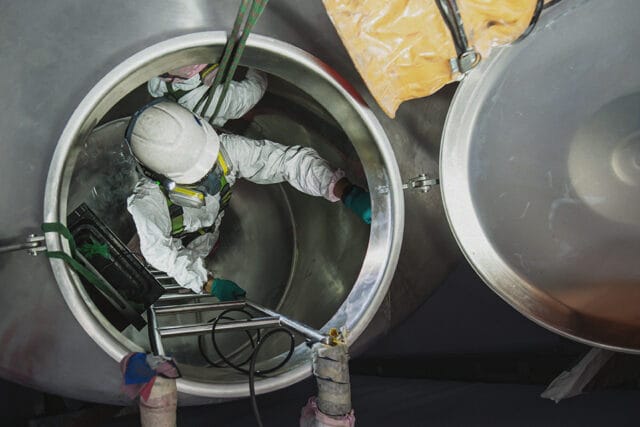
How to Get Process Safety Management Compliant
OSHA’s 14 Elements of Process Safety Management help businesses maintain compliance and create a culture of safety across their operation. Learn here what each element requires and why they’re so important.

In the early morning of April 8, 2021 an explosion and fire took place at the Yenkin-Majestic Paint Factory in Columbus, Ohio. While the official cause of the explosion, which took one worker’s life and resulted in over $1 million in property damage, still needs to be determined by the U.S. Chemical Safety Board (CSB), the Occupational Safety and Health Administration (OSHA) had previously cited and fined Yenkin-Majestic Paints in 2011, 2012, and 2015 for safety violations.
The Yenkin-Majestic Paint explosion is just one example of the dangers of handling highly-hazardous chemicals and flammables without taking the appropriate precautions. As an employer, it is your responsibility to understand the safety risks and requirements of your business, educate your workers and third party contractors on the appropriate procedures and policies and enforce these practices.
To help you prevent such incidents, OSHA established the process safety management (PSM) standard, designed to help prevent the unexpected release of toxic, flammable or reactive chemicals into a facility or surrounding environment. This applies to companies handling more than 130 reactive and toxic chemicals, or flammable gases and liquids of 10,000 pounds or more, regardless of industry. This includes, but is not limited to:
- Manufacturing (including pyrotechnics and explosives manufacturers)
- Construction
- Utility services (electric, gas and sanitary)
- Farm product warehousing
- Natural gas liquids
- Wholesale trade
Retail facilities, oil or gas well drilling or servicing operations and unoccupied remote facilities are not legally required to follow PSM.
14 Elements to Incorporate into Your PSM Program
An effective PSM program that is compliant with OSHA requirements will protect your employees, contractors and any visitor to your facility. You will need to incorporate these 14 elements into your PSM program in order to be compliant and avoid any violation-related fines or penalties:
- Employee Participation – Let’s start with arguably the most important element. In order to maintain a safe facility, all employees and contractors must understand the work and environment requirements, as well as the PSM program itself. This includes being represented at all PSM-related meetings in order to stay well-informed.
- Process Safety Information – Along with participating in the PSM program, all employees should have access to and understand safety information related to the risks of working with hazardous materials. It is your responsibility as the employer to collect and document this information.
- Process Hazard Analysis – Once every five years, conduct a comprehensive process hazard analysis to identify processes posing the greatest risks to your employees. This should be conducted by a team of engineering and maintenance experts and include “what if” scenarios, checklists methods, hazard and operability studies and failure modes.
- Operating Procedures – OSHA wants to know that you have all of your bases covered. All your operating procedures need to be documented, including how you plan to keep everyone safe during startup, normal operations, temporary operations, emergency shutdowns and your plans for starting back up.
- PSM Training – Working with highly hazardous materials requires thorough training from competent sources. And we cannot emphasize this enough – documentation! OSHA requires that, like your procedures, employee training be well-documented.
- Contractor Training – Just like regular employees, contractors need to be well-informed of the risks involved in their work and the importance of following safety protocols. Anyone handling hazardous materials needs to be diligent.
- Pre-Startup Safety Review – Every modification to your facility, even if it only affects a single component or process, requires a review of the safety procedures. This applies to both new and modified facilities.
- Mechanical Integrity – Major equipment including pressure vessels, storage tanks, piping systems, and ventilations systems require periodic, documented inspections that follow generally accepted good engineering practices.
- Hot Work Permits – If you have employees or contractors who weld or perform other high-temperature work, you must issue hot work permits. Personnel must also be trained to post and file these permits.
- Management of Change Process – Any change to procedures related to chemicals, technology and/or equipment needs to address the technical basis for the change, its impact on safety and health, necessary modifications to operating procedures, the time period for the change, and any authorization requirements.
- Incident Investigation/Accident Investigation – Accidents happen, and if an incident occurs and results in a catastrophic release of hazardous materials, an investigation must take place. This investigation will get at the root causes of the incident and provide recommendations for resolution.
- Emergency Planning and Emergency Response – Don’t just think big here, be detailed in your response plans, as even minor chemical releases have the potential to lead to major incidents. Your emergency response plan should include procedures for mitigating both large and small chemical releases.
- Safety Compliance Audits – Individuals working with hazardous materials should recertify their credentials at least every three years, and as an employer, you should retain the two most recent compliance audit reports.
- Trade Secret Protection – Every employee has the right to know the processes put in place at their work that may affect their health and safety. Under the trade secrets rules, employers are no longer allowed to restrict this information from employees.




